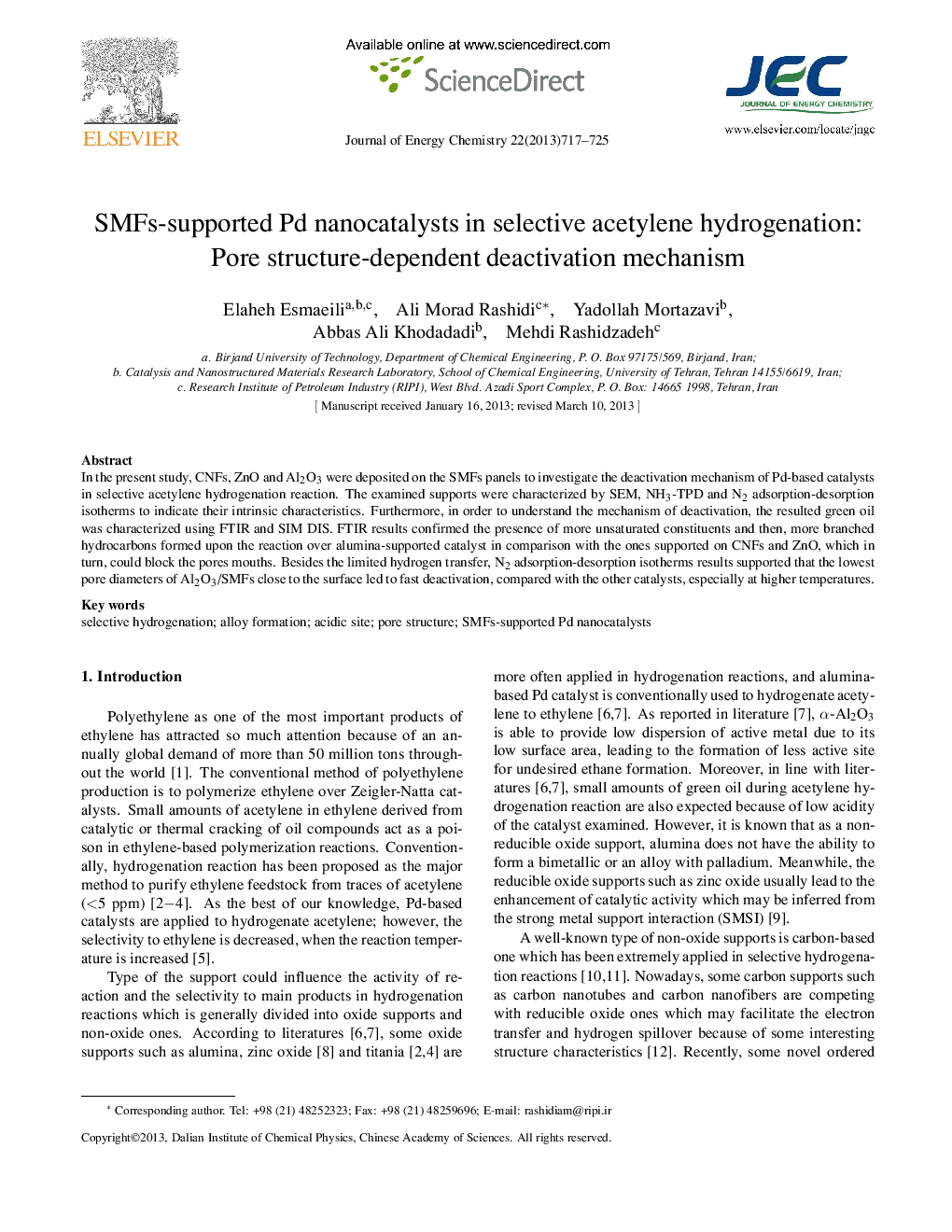| Article ID | Journal | Published Year | Pages | File Type |
|---|---|---|---|---|
| 64080 | Journal of Energy Chemistry | 2013 | 9 Pages |
In the present study, CNFs, ZnO and Al2O3 were deposited on the SMFs panels to investigate the deactivation mechanism of Pd-based catalysts in selective acetylene hydrogenation reaction. The examined supports were characterized by SEM, NH3-TPD and N2 adsorption-desorption isotherms to indicate their intrinsic characteristics. Furthermore, in order to understand the mechanism of deactivation, the resulted green oil was characterized using FTIR and SIM DIS. FTIR results confirmed the presence of more unsaturated constituents and then, more branched hydrocarbons formed upon the reaction over alumina-supported catalyst in comparison with the ones supported on CNFs and ZnO, which in turn, could block the pores mouths. Besides the limited hydrogen transfer, N2 adsorption-desorption isotherms results supported that the lowest pore diameters of Al2O3/SMFs close to the surface led to fast deactivation, compared with the other catalysts, especially at higher temperatures.
